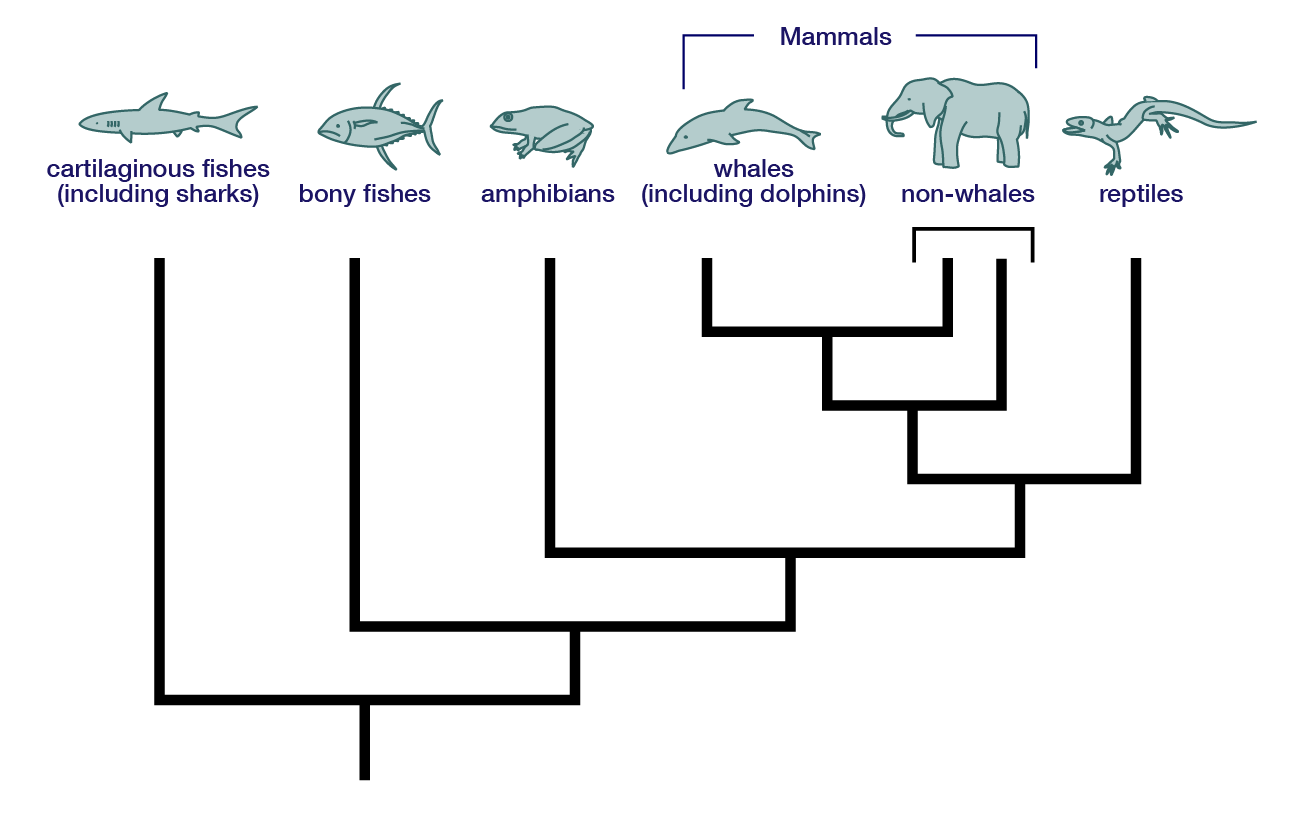Dolphins and sharks both have a streamlined body shape with a triangular fin on the back and two side fins. However, the two animals also have many differences.
| Sharks | Dolphins |
 |
 |
| skeleton made of cartilage | skeleton made of bone |
| use gills to get oxygen from the water in which they swim | go to the surface and breathe atmospheric air in through their blowholes |
| don’t nurse their young | do nurse their young |
| don’t have hair | do have hair – they are born with hair around their “noses” |
Shark photo provided Dong Lin © California Academy of Sciences; Dolphin photo provided by M. Winning © California Academy of Sciences.
They may share the same basic shape, but underneath their skins, sharks and dolphins are very different!
The following tree shows the relationship between various groups, including cartilaginous fishes (sharks) and mammals (dolphins). They are not very closely related to one another. So how did they end up looking so much alike?
What’s the advantage?
If two species face a similar problem, challenge or opportunity, evolution may end up shaping them both in similar ways. Both dolphins and sharks swim after prey in the ocean. Streamlined bodies and fins provide a big advantage for them, allowing them to swim faster. We know that dolphins and sharks are not closely related, and they didn’t inherit their similar body shapes from a common ancestor. Their streamlined bodies, dorsal fins and flippers are the result of convergent evolution. Since dolphins and sharks occupy similar niches and face similar challenges, similar adaptations have been advantageous to them, resulting in their analogous structures.

